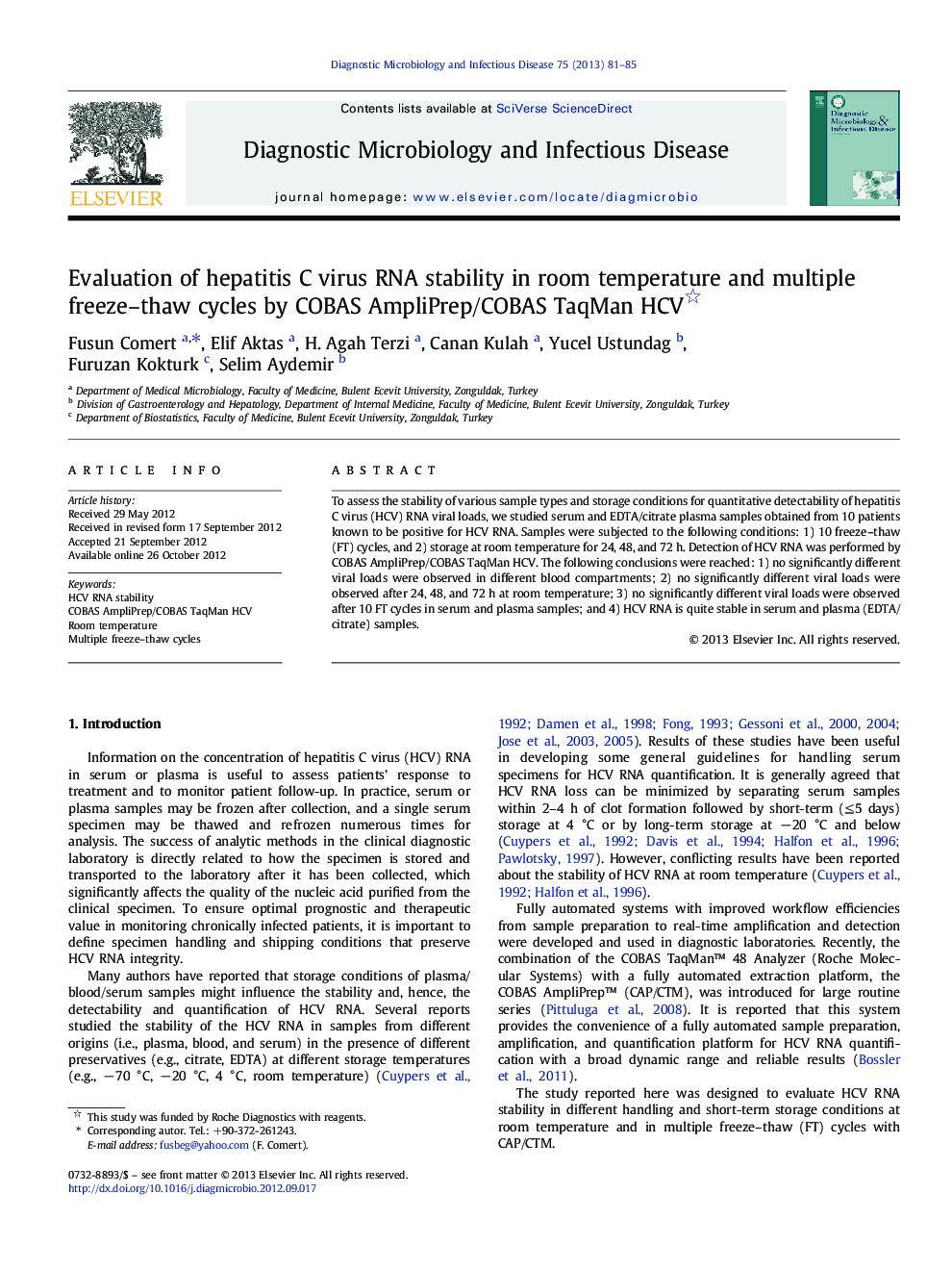| Article ID | Journal | Published Year | Pages | File Type |
|---|---|---|---|---|
| 6116209 | Diagnostic Microbiology and Infectious Disease | 2013 | 5 Pages |
Abstract
To assess the stability of various sample types and storage conditions for quantitative detectability of hepatitis C virus (HCV) RNA viral loads, we studied serum and EDTA/citrate plasma samples obtained from 10 patients known to be positive for HCV RNA. Samples were subjected to the following conditions: 1) 10 freeze-thaw (FT) cycles, and 2) storage at room temperature for 24, 48, and 72 h. Detection of HCV RNA was performed by COBAS AmpliPrep/COBAS TaqMan HCV. The following conclusions were reached: 1) no significantly different viral loads were observed in different blood compartments; 2) no significantly different viral loads were observed after 24, 48, and 72 h at room temperature; 3) no significantly different viral loads were observed after 10 FT cycles in serum and plasma samples; and 4) HCV RNA is quite stable in serum and plasma (EDTA/citrate) samples.
Keywords
Related Topics
Life Sciences
Immunology and Microbiology
Applied Microbiology and Biotechnology
Authors
Fusun Comert, Elif Aktas, H. Agah Terzi, Canan Kulah, Yucel Ustundag, Furuzan Kokturk, Selim Aydemir,
